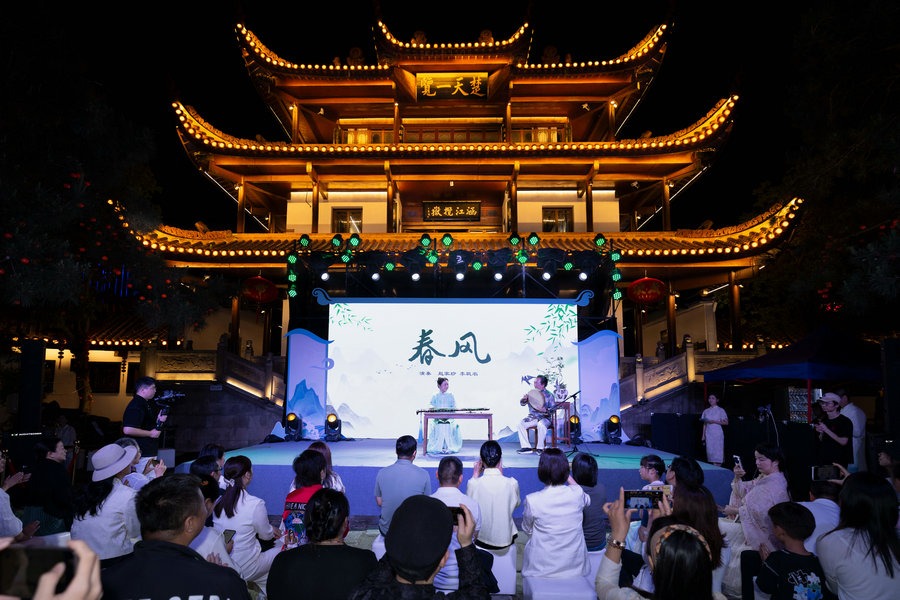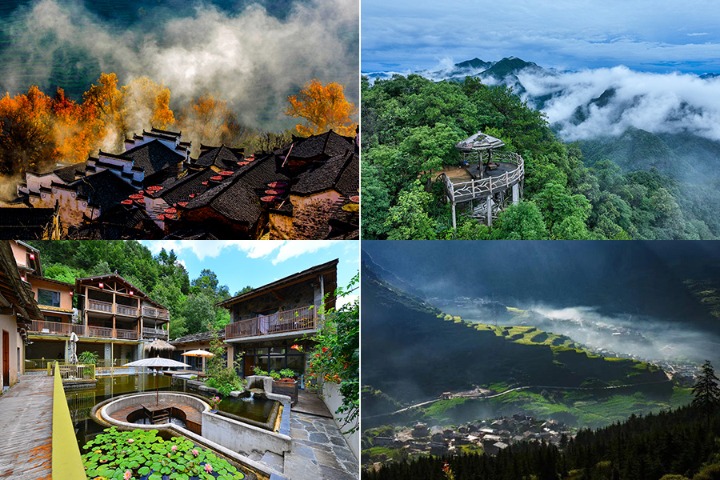Reservation-free policy draws booming museum visitors

It is now possible for Chinese painting enthusiast Lin Yali to go on a joyful trip to various museums and exhibitions at will, as the new walk-in policies have exempted her from prior reservation rules.
Since July 6, the Guangzhou Museum of Art has allowed entry without any reservations, provided the visitors pass the security checks. Additionally, the museum has extended its hours until the end of August, offering a cool, art-filled summer experience.
Lin, from Central China's Hunan province, took a vacation to South China's Guangdong province to visit the 14th National Exhibition of Fine Arts upon hearing the favorable policy.
"I was worried I wouldn't get a spot in advance because of the large crowd in summer. Now everything gets easier and I can take my time to enjoy these amazing Chinese paintings," said Lin.
Likewise, the southern Chinese metropolis of Shenzhen announced on Monday the full elimination of its reservation policies for 133 sites in the city, including 17 tourist attractions, 61 museums, 33 art galleries, 12 libraries, and 10 cultural centers.
Museums and historical sites have recently become popular tourism choices in China. Data from the National Cultural Heritage Administration (NCHA) showed that museums in China hosted over 40,000 exhibitions and more than 380,000 educational activities in 2023, attracting a record-breaking 1.29 billion visitors.
To better serve visitors, the NCHA recently recommended that museums extend their opening hours and eliminate their reservation policies.
In response, numerous museums, including the Capital Museum, Sanxingdui Museum, Shanghai Museum and Guangzhou Museum of Art, have extended their hours and introduced various visitor-friendly programs, such as nighttime visits and immersive experiences, to enhance the accessibility and appeal of Chinese cultural heritage.
Li Cheng, a high school graduate who has a strong infatuation with China's history and traditional culture, has set local museums as his top destination to visit. The new policy has enabled him to visit more historic sites.
This summer, Li paid a visit to Chengdu with his mother after the college entrance exam. Their first stop was Chengdu Jinsha Site Museum, where the famous gold ornament called Sun and Immortal Birds was exhibited. The Sanxingdui Museum and Chengdu Museum are now added to his itinerary.
Data shows a significant increase in tourists after the elimination of the reservation policies across multiple tourist cities. According to the big-data research institute of online travel service provider Qunar, the search volume for tickets to visit Beijing scenic spots has nearly tripled since Beijing eliminated its reservation policies for all tourist attractions, except for the Palace Museum and the National Museum of China.
Several attractions and museums in Suzhou, East China's Jiangsu province, also experienced a peak in visitor flow after the elimination of the reservation policies, receiving 5.32 million visitors during this year's Dragon Boat Festival, up one-third year-on-year.
China has 57 UNESCO World Heritage Sites, including 39 cultural heritage sites and 4 mixed natural and cultural heritage sites currently. In 2023, the nation had 6,833 museums, attracting over 1.2 billion visitors annually.
The lifting of the reservation policies has offered foreign visitors interested in Chinese culture new choices besides natural scenery and food tours, particularly following the 144-hour visa-free transit policy that facilitates entry into China.
According to the online travel service provider Ctrip, domestic inbound travel orders in the first half of the year increased by more than 1.6 times year-on-year.
According to a survey conducted by the China Tourism Academy on inbound tourist satisfaction, over 60 percent of respondents cited experiencing the Chinese culture as the primary reason for their travel to China.
Dai Bin, director of the China Tourism Academy, stated that the integration of culture and tourism has become a trend as people's living standards improve and their travel experiences increase. Cultural and historical landmarks, such as museums and historical cities, have become "must-visit" destinations for many tourists.

































